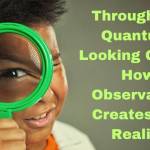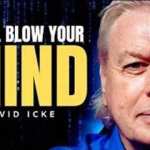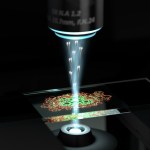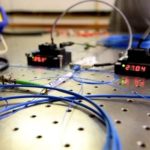Source: By Archana Raghuram | Temples Books and Science YouTube Channel
“Everything that we call real is made up of things that cannot be regarded as real. If quantum mechanics hasn't profoundly shocked you, you haven't understood it yet.” ~ Niels Bohr, winner of the Nobel Prize in Physics in 1922.
In the video, Archana Raghuram describes how Nobel-prize-winning physicists solved the Bohr-Einstein debate about the nature of reality and proved that the world isn't real.
RELATED ARTICLE: Nobel Prize in Physics Awarded for Proving the Universe Is Not Real | Where Quantum Physics Meets Vedanta
Here's a summary of the video:
Archana Ji begins by introducing the concept of quantum physics, specifically the idea that particles have no real existence until they are observed. This concept holds that particles only acquire specific properties, such as shape, size, and location, when someone attempts to measure these properties. Essentially, the act of observation brings the particle into existence. In the absence of observation, particles don't exist, implying that reality as we understand it is not real.
According to classical physics, reality is defined by objects that have objective existence, i.e., they exist independently outside a person's mind. However, the nature of fundamental particles – the building blocks of the universe – contradicts this definition as they only exist when observed
Niels Bohr, one of the founders of quantum physics, said that everything considered real is made of things that can't be considered real. However, Albert Einstein, along with many other scientists, was skeptical of this concept. Einstein suggested that there could be hidden properties of nature yet to be discovered that explain the seeming unreality of particles.
The video presents an analogy to help explain Einstein's theory: Particles are like balls that are either black or white, existing inside an invisible box. Observation simply uncovers the existing state of the particle, akin to opening the box to reveal its contents. Quantum physics, in contrast, posits that there is no box at all. Particles simply appear upon observation and cease to exist when not observed.
This discrepancy led to the discovery of entangled particles, which exhibit mirrored behaviors despite being separated by great distances. Observation of one of these entangled particles automatically defines the state of the other. This phenomenon gave scientists the unique opportunity to indirectly observe a particle by looking at its entangled pair.
In the entangled particles' context, quantum physics says that observing one particle brings the other into existence instantaneously, regardless of the distance between them. Einstein, on the other hand, argued that both particles always existed, and observation merely revealed their states.
In 1964, John Stewart Bell came up with a theorem called Bell's Inequality to resolve the deadlock. His theorem uses statistical methods to test the two contrasting theories. He suggested that simultaneous observation of two entangled particles should reveal whether observation brings particles into existence (as per quantum physics) or merely uncovers their pre-existing states (as per Einstein's theory).
In the following years, scientists Alain Aspect, John Clauser, and Anton Zeilinger conducted experiments observing entangled particles as proposed by Bell. The data they gathered showed that particles indeed come into existence only upon observation, effectively proving quantum physics' claim and contradicting Einstein's theory. As such, these experiments demonstrated that since particles (the building blocks of the universe) aren't real in the traditional sense, the universe itself isn't real.
The video concludes with Archana Ji bringing up new questions this discovery has raised. It implies that an observer is necessary to bring the universe into existence and that this observer might be linked to the concept of consciousness. The nature and power of this observer, and how observation brings things into existence, remain largely unexplored mysteries that science is just starting to investigate.
















